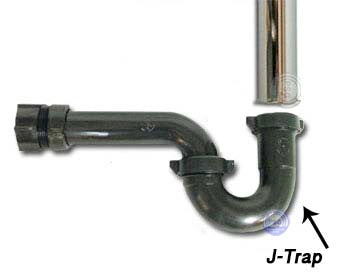Uh Oh! While Molding My Willy, I Clogged My Drain with Molding Powder. How Can I Unclog It?

Though completely safe and harmless to your pipes, it's best not to pour any molding powder from your Clone-A-Willy Kit down your drain. If you create your mold in your shower or over a drain, though, it's quite possible that some molding powder will end up going down it. If it clogs, here are 3 simple ways to unclog it.
1. Mix Baking Soda and Vinegar
When you mix baking soda and vinegar, carbon dioxide is produced. This agitates material in the clog, making it easier to flush away. Here's how to do it:
Remove as much excess water as possible. Pour about a half box of baking soda (sodium bicarbonate) into the clogged drain. Pour vinegar (a weak acetic acid) into the drain on top of the baking soda. The reaction between the chemicals will produce bubbles. If you have a plunger, try to loosen the clog. Rinse with hot water. Repeat if necessary.
Mixing baking soda and vinegar together is completely safe and usually effective for a simple molding powder clog.
2. Mix Sodium Hydroxide and water
Drain still clogged? This method is much stronger, so be careful. The active ingredient in serious drain cleaners is sodium hydroxide (or lye). You can buy sodium hydroxide (also called caustic soda) at any hardware store. Some commercial products also contain small metal flakes, which react with sodium hydroxide to produce hydrogen gas and a lot of heat. The heat helps break down the organic material in the molding powder and push the clog through. Here's what to do:
Fill a plastic bucket most of the way full with cold water. Sodium hydroxide can react with metal, so a glass bowl is fine too, but don't use a metal pot. Add 3 cups sodium hydroxide. You can stir it with a plastic or wooden spoon. The mixture will fizz and heat up. Pour this solution into the drain. Let it work its magic for 30 minutes, and rinse with boiling water.
The sodium hydroxide dissolves organic material, like hair, grease, and your molding powder. This is a highly effective chemical, but as with commercial drain cleaners you'll need to follow safety instructions. Sodium hydroxide can burn your skin and give off caustic vapors, so wear gloves and avoid handling sodium hydroxide or putting unprotected hands in the water after adding it. Be sure there's good air circulation in the room and try to avoid inhaling the fumes. Basically, follow the safety precautions listed on the container.
 3. Unscrew the J-Trap and clear by hand
3. Unscrew the J-Trap and clear by hand
If both of the above fail to clear your drain, you may have to just take it apart and clear it by hand. This is usually not as difficult as it sounds! Just find the J or U-shaped trap below the drain, put a bucket underneath it, and unscrew the trap from the pipes. Clear it by hand and reattach, being sure to tighten everything back up properly.



